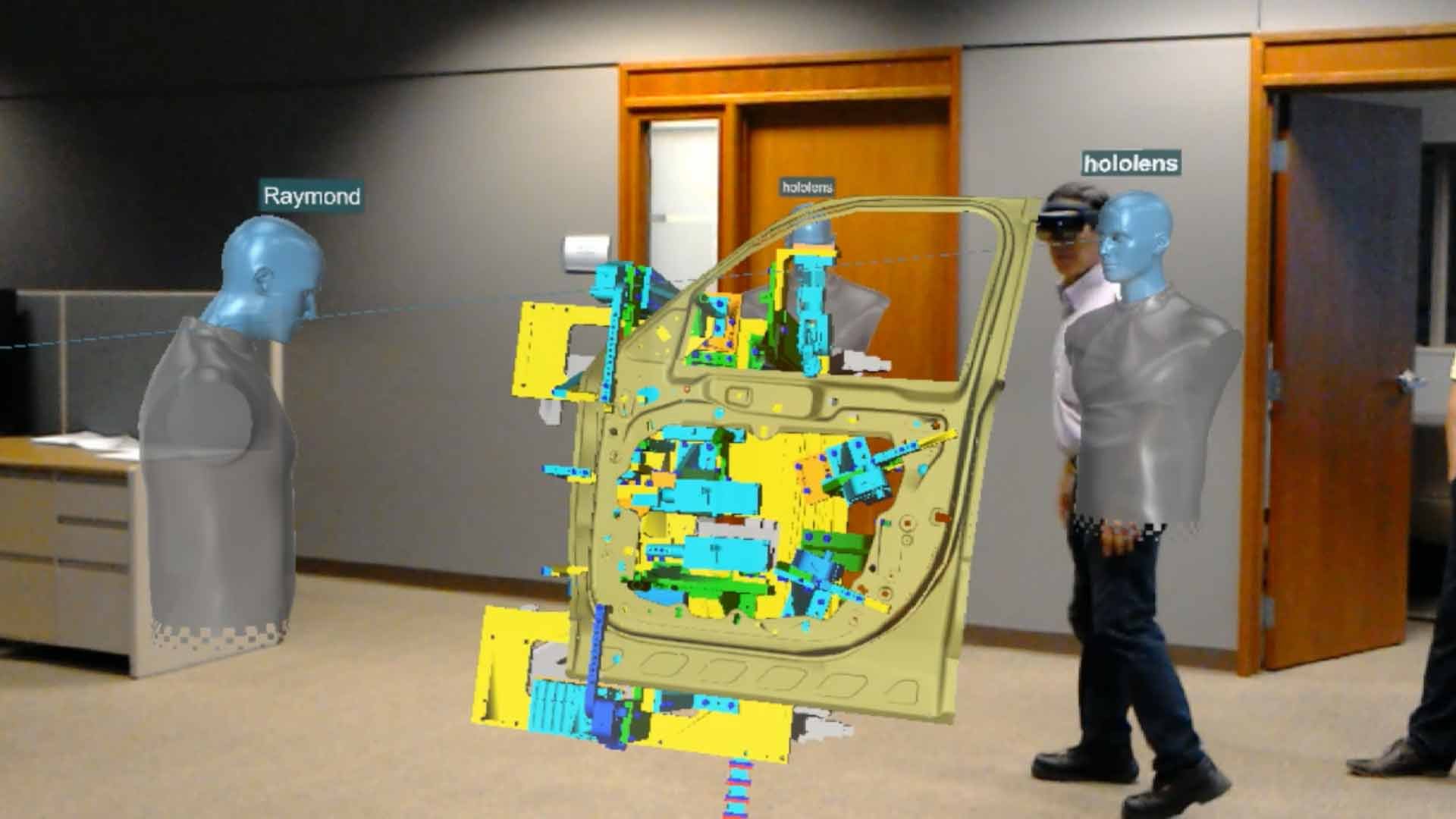
Valiant TMS Merged Reality Concept
XR User Story
TheoremXR and Microsoft HoloLens 2
Savings at a Glance
At least 4 hours saved on processing scans/data
Data available immediately instead of waiting 2 days
Positive impact on project timeline
About Valiant TMS
Valiant TMS is a global company powered by people working together to be the most trusted partner in delivering intelligent automation solutions. The company is a full-service Industry 4.0 system integrator leading the way in digitalization, process development, design and technology integration. Valiant TMS specializes in welding and joining, automated assembly and test, industrial parts washers and final assembly systems. The company was founded in Windsor, Ontario in 1959 and today operates from 24 facilities in 13 countries with 1,700+ team members serving companies in the automotive, aerospace and heavy industry sectors.
Partnering with Theorem Solutions
We interviewed Suresh Rama, Director, Business Intelligence and Innovation, Raymond Slowik, Senior R&D Engineer and Jaee Jadhav, Mechanical R&D Engineer from Valiant TMS about their experience of working with Theorem and to discuss some of their current and future use cases.
Valiant TMS started using Theorem’s CAD conversion solutions about 10 years ago. When they began looking for a partner to help them develop a merged reality and IIOT concept – the direction Theorem had taken with its’ XR visualisation tools with the use of 3D CAD content to create holographic models using the Microsoft HoloLens – had yet again made Theorem the perfect partner.
Objectives
The Merged Reality Concept
Let's begin by talking about the Valiant TMS Merged Reality Concept
Suresh: "I have a teenage son at home who is really into virtual reality and video games and one day it struck me that his experience growing up must be so different from mine when I was his age.
I assembled a team to begin studying virtual technologies and how we can apply them to our process of designing and integrating industrial automation solutions. We knew we were on the brink of a major shift in how the industrial sector uses technology as we were already seeing it infiltrate this space in small ways.
While my team dove into their research, I briefed our senior management team and received overwhelming support to continue down this path. Their forward-thinking attitude was centered on our ability as a company to serve our customers and align with their aspirations and vision of the factories of the future. As a trusted automation partner, our customers expect us to be leaders in this area."
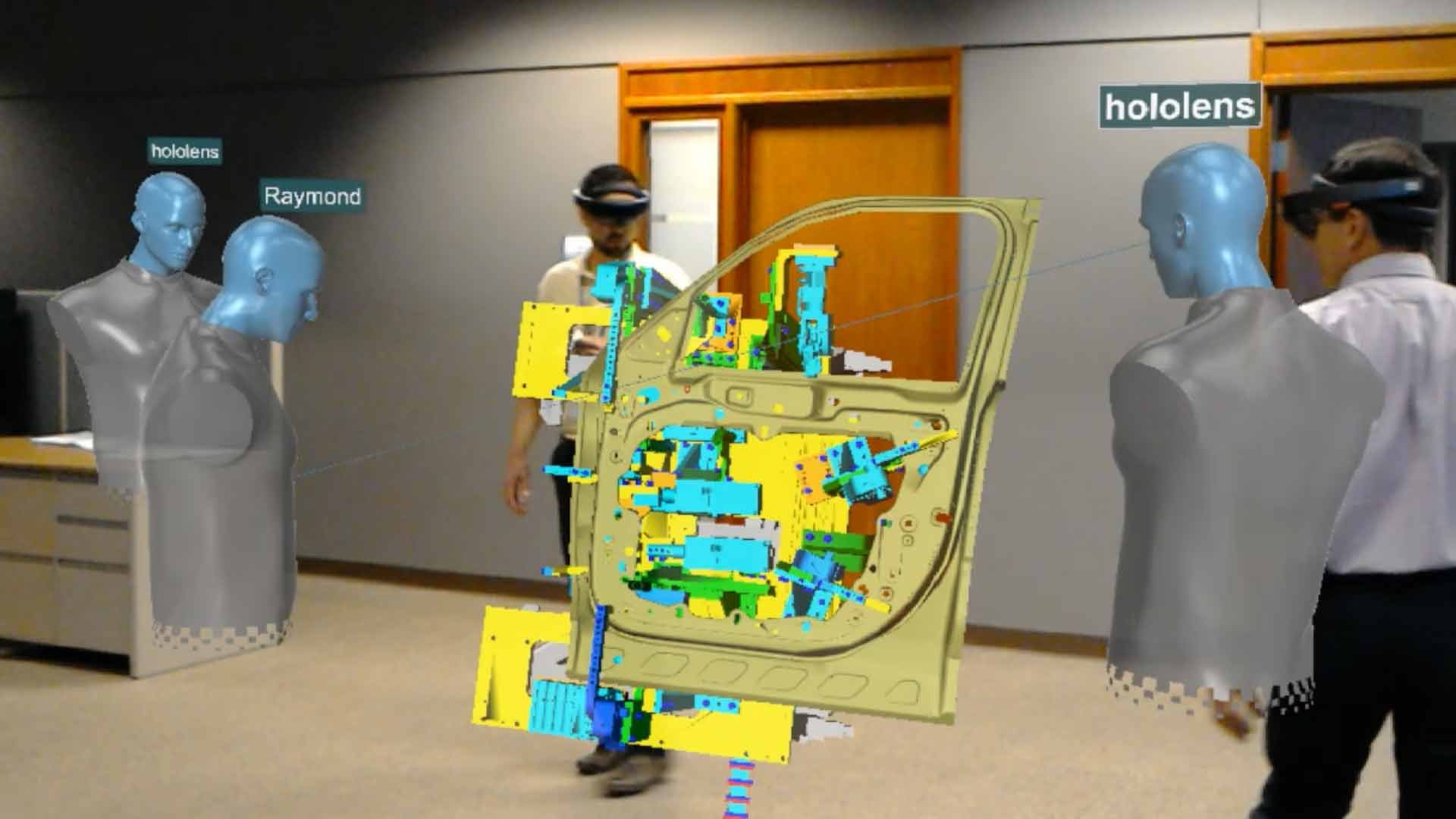
"After comprehensive research, we selected Microsoft HoloLens as our hardware platform, and TheoremXR as our software solution because of how well it worked with our existing 3D CAD data and aligned with our ideas and concepts.
Today, we have made significant progress. Many of our teams have adopted this technology and use it every day – they rely on it to perform at a higher level.
What started as an idea and concept within our North American operation is now being used by our teams globally; growth and adoption is still accelerating as more people are exposed to the benefits it brings. The COVID-19 pandemic has been a factor in increasing the rate of adoption because people need new ways to collaborate due to travel restrictions and health and safety concerns – the fact is that people still need to work in a team environment, they just need to do it from home instead of the office or plant."
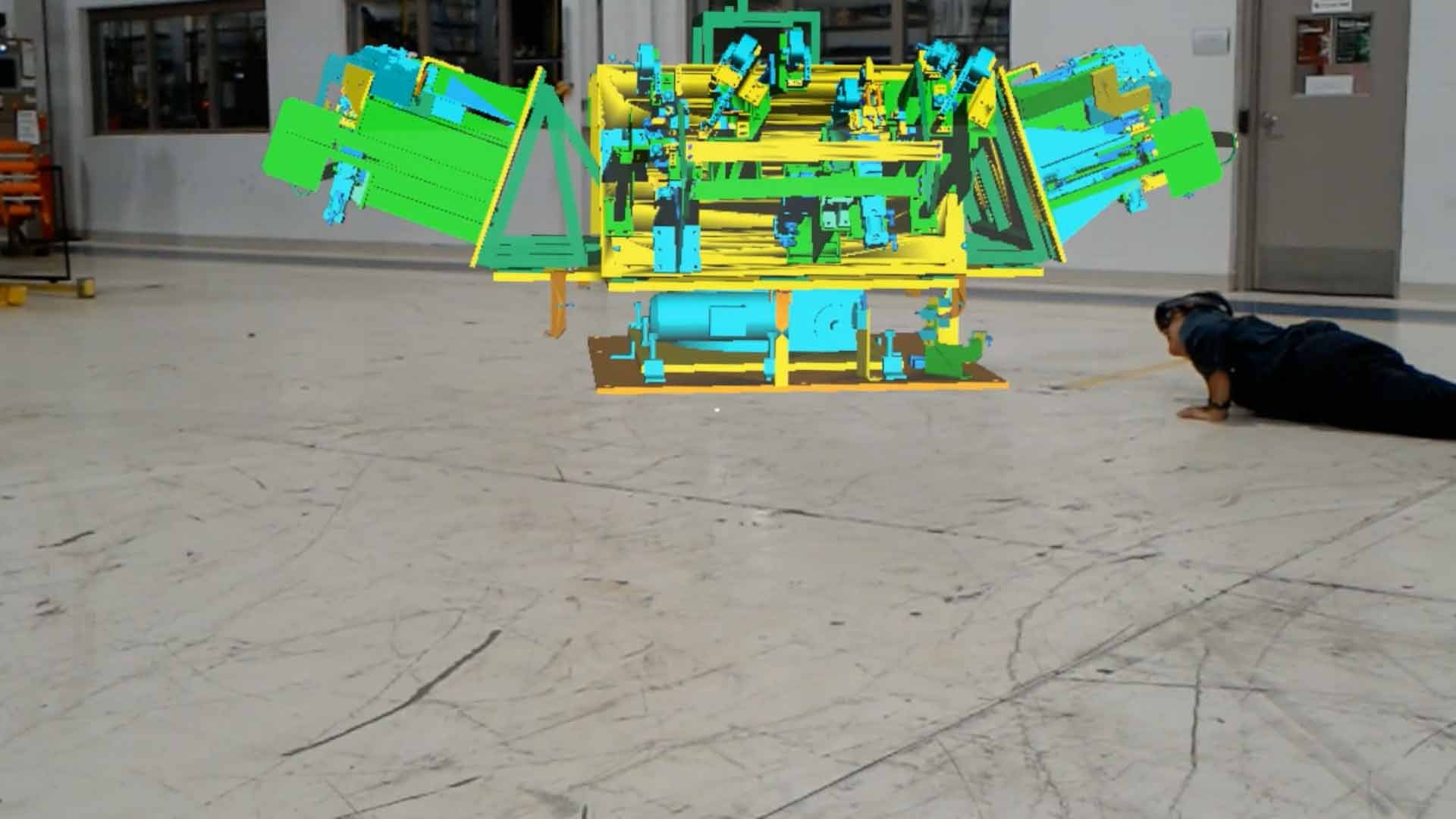
Developing a Strategy and Concepts
Leveraging and applying new technologies
Merged Reality and IIOT for Valiant TMS
Ray: "I was tasked with developing a strategy and concepts to leverage and apply new technologies, such as merged reality and IIoT (industrial internet of things), for Valiant TMS.
I spent a long time researching and examining various hardware and software technologies from several companies to determine how our vision and what we needed differed from or aligned with what was currently available. We realised that there are two potential paths to implement a merged reality solution.
One path is through the visualisation and utilisation of our 3D CAD content to create holographic models that can be used and manipulated in space and in the real world through head gear or other forms of visualisation hardware. The other path, was the utilisation of information transfer, allowing individuals to quickly acquire knowledge based on directions provided through the visualization hardware. This is most often seen in instructional applications and many of the companies that we researched approached it from that direction.
Our focus is on design, build and integration of automation equipment and specialized manufacturing technologies. We wanted to empower the people on our manufacturing team with effective tools that would allow them to engage with the CAD design data as they assemble the actual equipment with the ability to validate that it’s been done right."
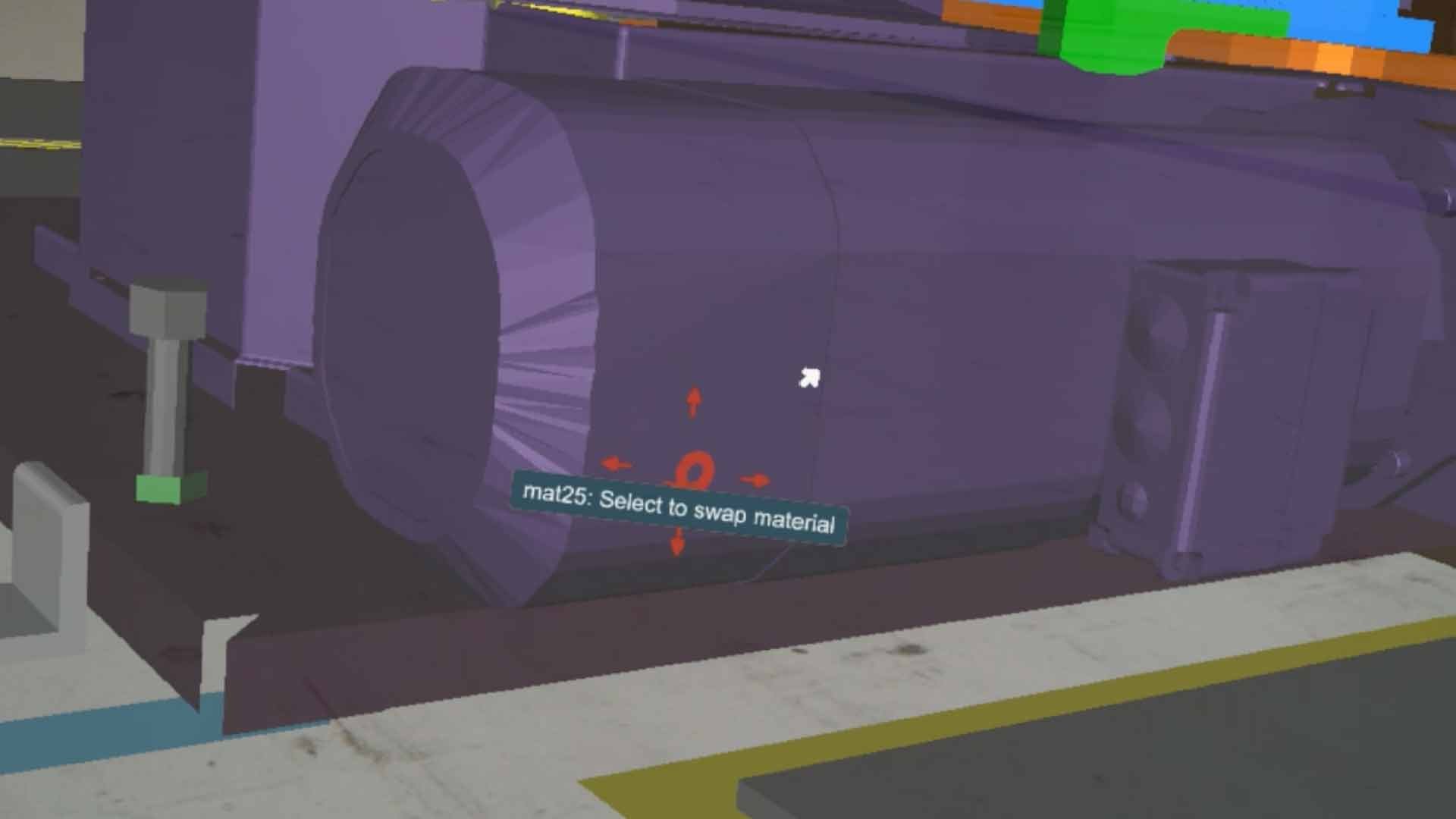
"We also needed a better way to perform incoming material inspection, ensuring that it matches the approved design. Finally, we felt our customers could benefit from an immersive review of our design proposals to ensure that our equipment will comply with their requirements, specifications, and expectations.
Our vision aligned with what Theorem was offering, so we decided to move forward with the solution"
Raymond Slowik, Senior R&D Engineer @ Valiant TMS
Return on Investment
What about ROI in terms of cost/time savings that can be expected by implementing some of your use cases?
Suresh: "We have several cases where traditionally it may have taken days to carry out a task, required travel time and related expenses and may have delayed our project timing. After adopting HoloLens with TheoremXR and applying them to our process we’ve been able to do many of these tasks in a matter of hours, without having to travel. It’s much more efficient.
We have described several specific use cases to show some of the ways we have used the technology and realized benefits."
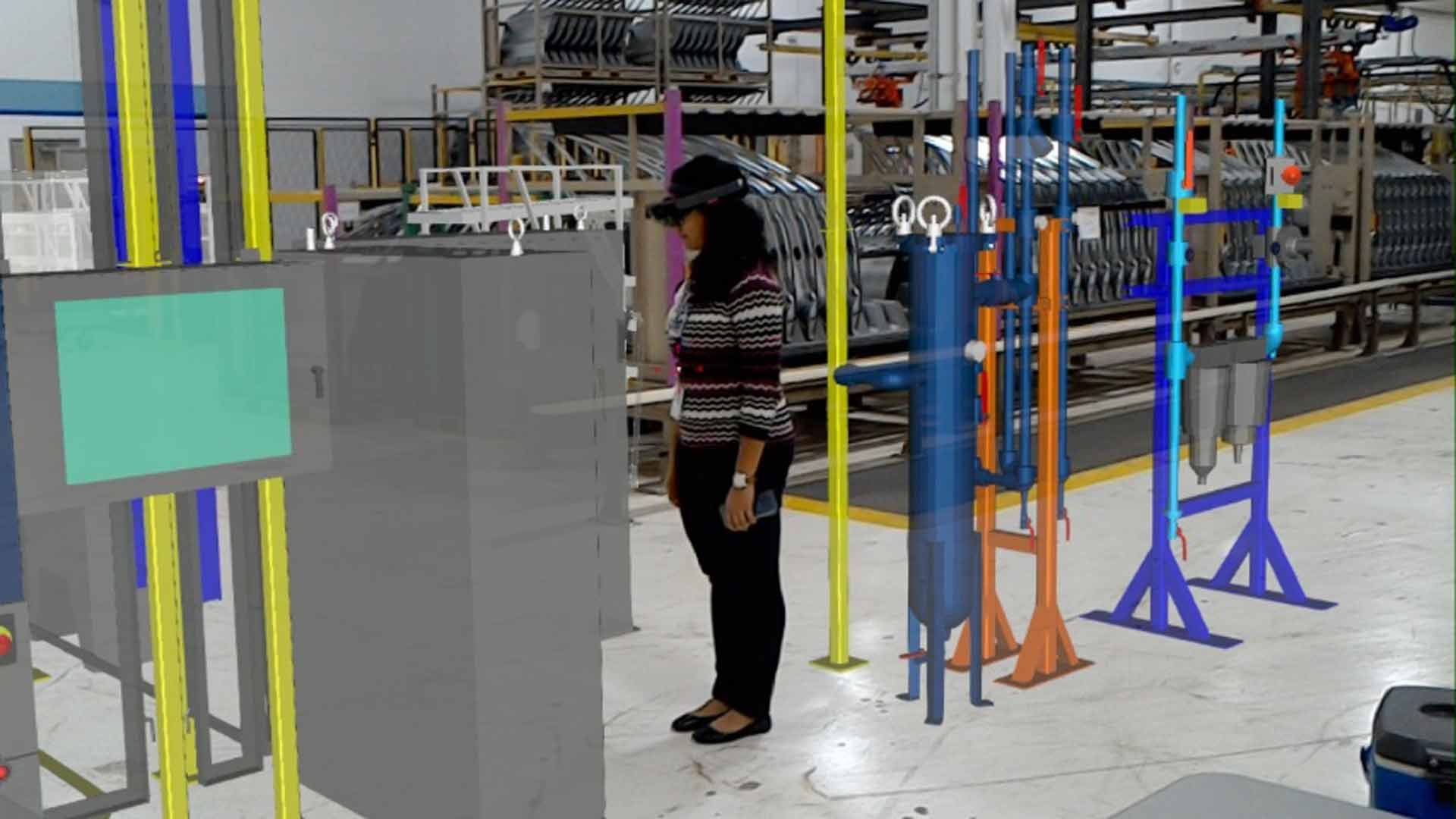
Use Case - Upgrade to Windshield Installation Robotic Cell
Theorem software on the HoloLens was used to verify clearances and detect interferences at our customers' production plant. Valiant TMS used design models in the JT format which were virtually overlaid into the physical assembly line prior to building the toolkits.
- Robotic assembly cell was approximately 1,500 ft² in size.
- Inspection occurred on a regular workday during a 30-minute line stoppage at lunch.
- Using HoloLens, the inspection was performed without the need to enter the cell and took approximately 1 hour in image collection and uploading for review.
- Traditionally, a laser scan can take upwards of 5 hours to carry out and requires the line to be stopped and emptied with a lock-out tag-out (LOTO) procedure carried out for safety. That's why they are typically done off-shift or on a weekend.
- Design engineers attended the on-site review and were able to visualize the tool changes from multiple angles in real time. This is not possible using the laser scan method.
- Information was available to the engineers immediately after inspection. The laser scan method would not be available for at least 2 days (1 day scan, 1 day processing and delivery).
Use Case Savings Summary
At least 4 hours saved on processing scans/data
Data available immediately instead of waiting 2 days
Positive impact on project timeline
Summary
Theorem’s Visualization Experience software has provided Valiant TMS with a unique opportunity to visualize 3D CAD models placed directly over real world equipment, tooling and components. Valiant TMS’ use of the software has improved their ability to quickly inspect tooling and components prior to acceptance from their vendors, ensuring that as-built components match as-designed plans, saving time and money at the assembly site.
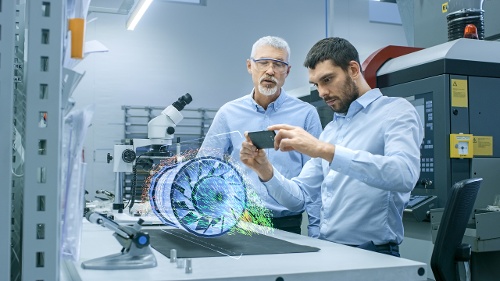
Learn how XR is at the forefront of CAD data visualization
TheoremXR exists to solve the problem of the cognitive gap. The cognitive gap is the relationship between the form in which information is presented, and the context in which it is applied. Advanced visualization, which places information in context with the environment to which it refers, is the solution.
Catchup on the latest TheoremXR news
Why TheoremXR?
TheoremXR is a complementary technology that works for the individual, the enterprise, at all levels and at all stages of the Extended Reality journey, enabling the user to optimize, visualize and collaborate around their design data. Backed by 30+ years of CAD data optimization and preparation experience, as a member of the Microsoft Mixed Reality Partner Program (MRPP), and partner to all major CAD vendors, TheoremXR provides a robust and agile solution for now and the future.
Demonstration Request
Register now to request your free demonstration of the TheoremXR product suite.
In just a few simple steps, we will be able to validate your request based upon the details you provide.
Note: Please use your company email address for validation purposes as we will not respond to personal email accounts.
-
Complete all of your required details.
-
Let us know which TheoremXR product you are looking to learn more about.
-
If you have a specific use case that you would like to discuss then please let us know.
-
We will contact you to discuss suitable days and times and get everything setup.
-
Please only use your company email address for validation purposes as we will not respond to personal email accounts


